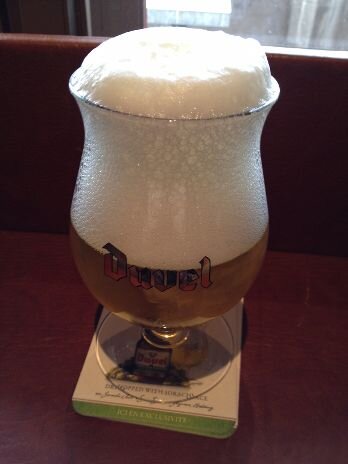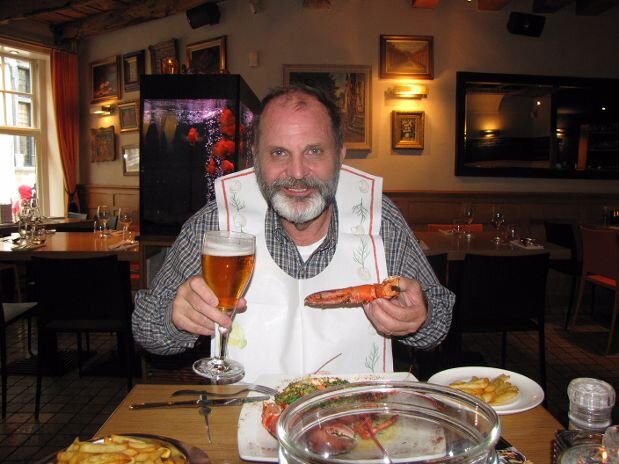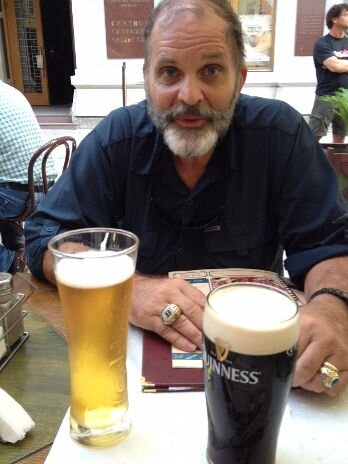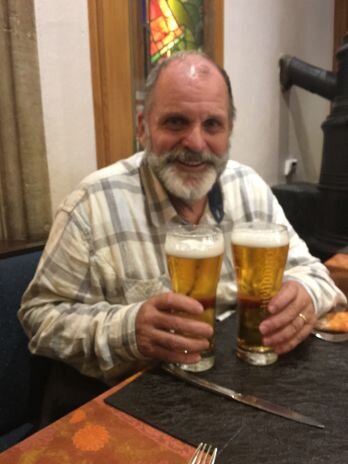2 European April Celebrations We Missed
Hank Schrader, USMA '71, Europe Destination & Europe River Cruise Expert
We always try to travel to Europe in April—the 26th is Anne’s birthday.
We have enjoyed river cruises and visits to any of the 50 European countries—it is always fun!
But there are two celebrations we have never been to in Europe and hopefully we can add them to our list of future travel experiences. First, is National Tartan Day on 6 April of each year. The second is National Beer Day on 7 April.
So, let’s explore together and learn about how we might celebrate these 2 great festivals in Europe—you won’t be disappointed!
National Tartan Day
Anne has some Scottish ancestors, so we wear the Tartan. National Tartan Day originated in Canada and the celebration has become a global celebration. The clans in Nova Scotia (New Scotland) started this festival and it became a national holiday in Canada. The celebration recognizes the Declaration of Arbroath which was signed in 1320. This document is essentially a declaration of independence of the Kingdom of Scotland from English rule.
In 2004, the Angus Council of Scotland (Arbroath is a part of the jurisdiction of the Angus Council) established the first festival in 2004—I guess they really didn’t need a special recognition day since tartan wearing is in vogue year round in Scotland, but they recognized the historical significance of the date and now it is a Scottish festival.
A Short History of Scottish Clans
Scottish Clans have many traditions but the wearing of the tartan is one of the best known traditions. A tartan is a fabric made up of horizontal and vertical stripes in different colors, on a colored background. They originated in the Scottish Highlands. Each clan has their own pattern, or several patterns. This big benefit was to quickly identify the different clans and pride.
Scottish clans were certainly not afraid to fight among themselves—wealth, land, reputation and just fighting to stay alive were some reasons there was seemingly constant conflicts among the clans. Many did not survive the conflicts. However, there were many benefits of the clan system—group defense, a sense of identity, easier to produce enough food for all members of the clan and ways to make a living producing goods and services for other clan members.
Today, the warfare has stopped and disputes are settled differently than in the past.
Now, How is it celebrated?
As you would expect, the gents all get decked out in kilts, there are parades with bagpipes and drums, dancing, Highland Games, sport contests and plenty of a “wee bit of a dram of Scottish Whiskey” or two is raised in glasses or flasks by all.
The MacFarlane Clan
Anne’s clan is MacFarlane. It is a Scottish Highland clan which held territory between Loch Long and Loch Lomond. Here is a picture of the clan crest:
The MacFarlane clan crest with the moto: “This I’ll Defend.”
The clan was a rough bunch—stealing others cattle and food seem to be their favorite pastime. They were so adept at cattle stealing, a moon lite night for those near the clans land was known as a “MacFarlane Lantern”.
This one of our clan T-shirts. It was designed by Douglas McFarland in 2015.
There are 5 tartans associated with the clan
A gathering of the MacFarlane Clan in Estes Park CO
Anne on the left waves during the parade in Estes Park CO
Anne and I have handmade kilts using the Modern Hunting pattern. It is one of the 2 most popular weaves—the other is the Modern Red.
Our dog Libby wearing the Modern Red Tartan
Anne in her Modern Hunting pattern kilt and sash at Estes Park, CO
A collection of MacFarlane kilt patterns and accessories. On the far left is an everyday sporrran—it is a plain design. At the bottom left, no smart Scott would be without a mug. At the top middle is the Modern Red Tartan with a kilt pin on top of this pattern. At the bottom middle is the Ancient Hunting Tartan pattern with the sgian-dubh (dagger). On the far right at the top is a formal sporran. And at the bottom is a flask to carry your adult beverages.
Kilts
The original kilt (known as the great kilt) was a 5-6 meter long cloth worn around the shoulders and fastened at the waist with a belt. Around the 18th century, the “little kilt” became more popular and that is the kilts we wear today. Kilts are so important to Scots, in a bid to quash their national identity, their English rulers made it illegal to wear kilts.
A proper kilt is worn with a sporran (a purse attached to the kilt belt, nowadays often holding your flask of your favorite adult beverage); a sgian-dubh (an ornamental dagger) and a kilt pin. Traditional kilts don’t have pockets, so you can understand the need for a sporran and accessories hanging from a kilt belt.
An everyday set of accessories. A kilt belt, a mug, a simple sporran and a sock dagger.
A more formal accessories set up.
The sgian-dubh was traditionally worn in the top of the sock by Highlanders. Sgian means knife and dubh means black in Gaelic
Scottish Highlanders were proud of their clan. They distinguished themselves from other clans by their tartan, their dagger, their kilt pin and their sporran. Highlanders had little trust in banks and often displayed their wealth by their clothing, which is always worn with pride by wearers of the tartan.
Kilts can be worn different ways—with a shirt for day wear or as formal wear with a Bonnie Prince Jacket and a clan or black bow tie. It is fun to wear and women really like it when men wear kilts, so enjoy this brief history of kilts for a celebration we would like to had somewhere in Scotland.
Hank Wearing his Prince Bonnie Jacket with Vest and the clan kilt
Anne and Hank on the AmaKristina during a Christmas Markets Cruise
Christmas Dinner at Kastel Engleberg in the Netherlands
National Beer Day
In an event I’ve been training for since I was 18 (the old legal drinking age many moons ago when I was younger), the answer here is what cool places in Europe have we tasted a brew or two? Often, we began our trips with a great beer together and take a picture—it has been a Schrader tradition for the many years we been traveling together.
Ok, this is an American holiday—this was the date of the passing of the Cullen-Harrison Act, which legalized the sale of beer in 1933 at the end of prohibition. Beer became legal first, then was followed by the repeal of the 18th amendment, which ended prohibition in December of 1933.
If you have never heard of this celebration, you are not alone. It was actually the idea of a craft beer guy in Virginia, who created a Facebook page with the title of National Beer Day.
There is actually a beer purity law in Germany. The only allowed ingredients are water, hops, and barley. It was written by Bavarian noblemen in 1516. Yeast is now also an acceptable ingredient.
For sure the best way to celebrate this day, is in a tavern, pub or other suitable drinking establishment with friends lifting a pint or two, as they say in England. We however, seem to celebrate this holiday year round, so we have expanded Nation Beer Day to be European Beer Year for the Schrader’s and we plan to show you some of our celebrations throughout Europe.
Enjoy our pictures—it really shows we just like beer, in most European countries.
Anne with one of her favorites—Guinness beer at the Guinness Storehouse Dublin, Ireland
Anne poses with Lazlo, one of the special waiters we have befriended on AmaWaterways during German Festival
Bitburger Beer served on AmaWaterways river cruises
Anne with another favorite Leffe beer in Brugge
Furstenberg Beer
Ganter Beer on the left in Freiburg Germany.
De Konnick beer in Antwerp It is a Belgian style pale ale.
Duval Beer. It is a golden ale beer.
Hank with 2 beer boots in a German restaurant in CO with Warsteiner Beer
Grimberg beer on the train in Europe
Lobster and Beer in Brugge
Hank in Brussels on restaurant row
2 beers—it is easy to identify Anne’s Guinness
Anne with 2 Leffe Beers in Brugge
Hank with 2 beers in Brasov, Romania
Ursus Beer in Brasov, Romania
Hank with 2 beers
Hank with 2 Leffe beers. It is a pale ale style beer.
Hank with an Augustiner Beer
2 Maas beers. It is a Belgian pilsner style beer.
Hofbrau Beer in Munich—it is brewed using the 1516 beer purity laws.
Hank on a beer tour in Nuremberg
Hank with 2 Paulander beers. It is a German Lager beer.
Hank with 2 Peroni Beers—it is an Italian Lager Beer
Soproni beer—a Hungarian Lager—we had these in Budapest
Hopus Beer in Antwerp. It is a IPA Belgian style beer.
Hank with another of Anne’s favorite Beers—Stella Artois. It is a Belgium pale lager style beer.
My Final Thoughts
What a great adventure—American and Canada festivals honoring the traditions started in Europe, so for us, it is a good reason to return to Europe and celebrate whenever we get the chance.—just another reason we love the Old World of Europe so much! We hope you enjoyed these pictures as much as we enjoyed experiencing them during our travels.
We are travel experts, ocean and river cruise specialists, and Europe destination experts. We have first-hand knowledge of almost anywhere you want to visit in Europe. We know our products and the vendors who sell them to you. We have designed special tours for dozens of clients, led several and will continue to find just the right vacation that will exceed your expectations.
When you are spending your hard-earned money for a vacation, you want an advisor who can match you with the right trip. You want someone who will understand your expectations and fuel your anticipation (or excitement) to get you the best possible trip experience. And, you want someone who can help you with the decision making process. We think we have all these qualities.
Whatever your Dream Destinations are, we are here to help you get the best possible vacation based on what is important to you! We will provide you high quality, expertly planned travel. Please give me a call 713-397-0188 (Hank) or email me at hschrader@dreamdestinations.com. We want to help you: Savor life…make memories…Visit Dream Destinations! Your journey begins here!
HANK is a certified Western European Destination Specialist (DS) who has been traveling to Europe for 49 years. He is also an Accredited Cruise Counselor (ACC), conferred by the Cruise Line International Association (CLIA). This recognized expert in cruise and leisure travel is a retired Army Officer, and taught World Geography for 8 years. He is a `71 graduate of West Point and has earned 2 master’s degrees. His other Certifications:
AmaWaterways River Cruise Specialist
Viking River Cruise Specialist
Scenic River Cruise Specialist
Emerald Waterways Specialist
Avalon Waterways Specialist
Brit Agent













































